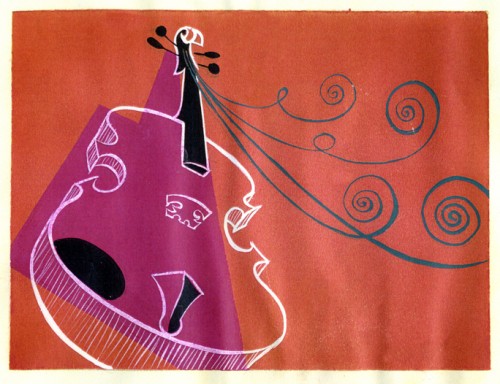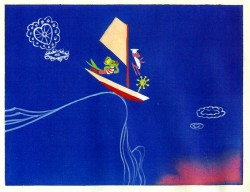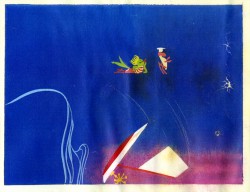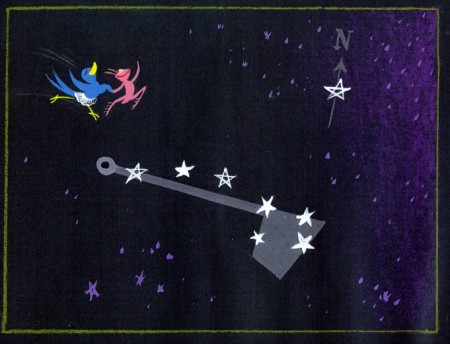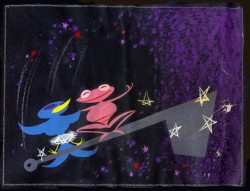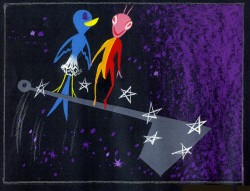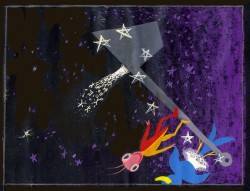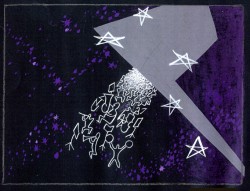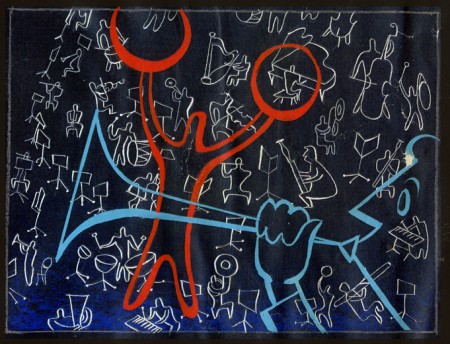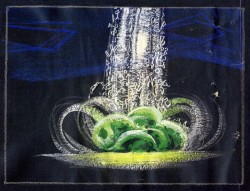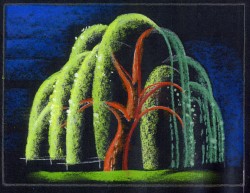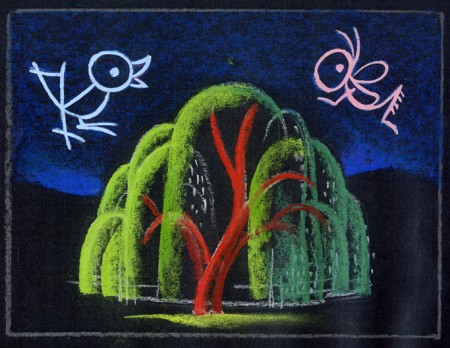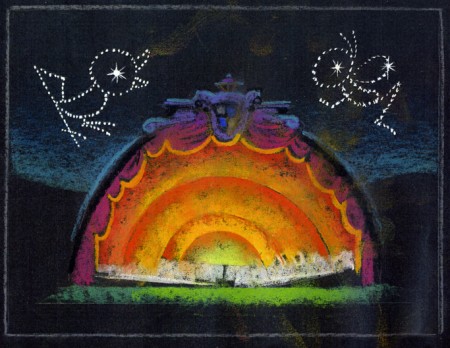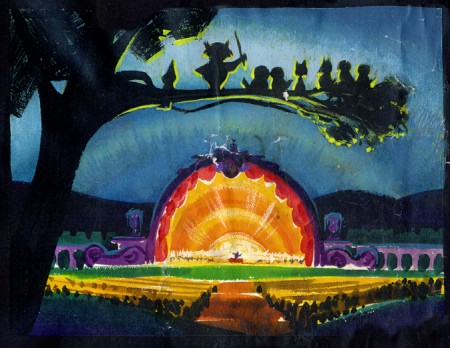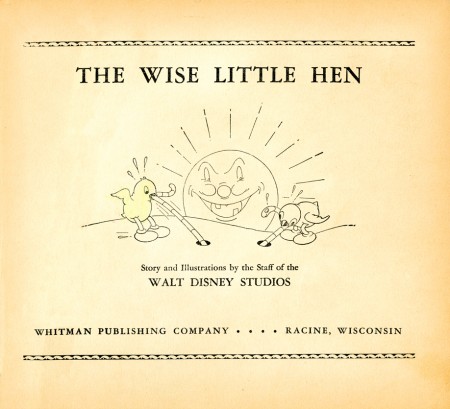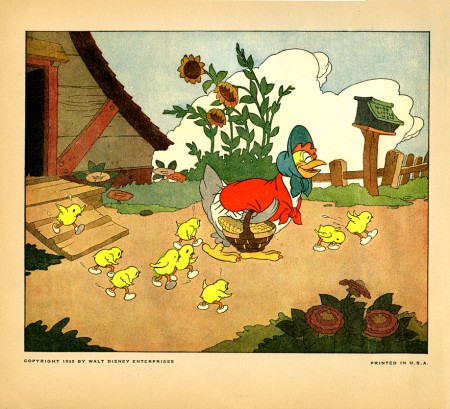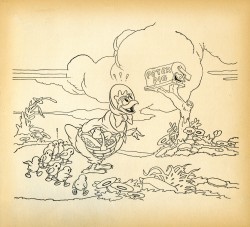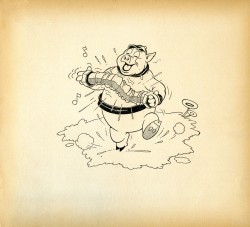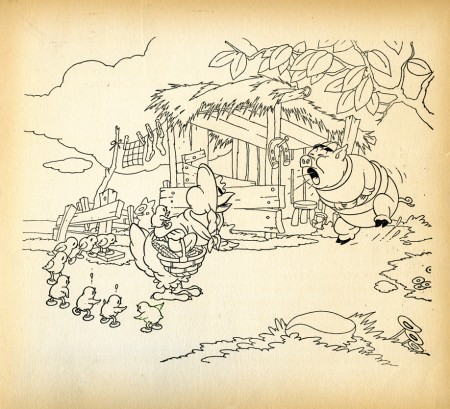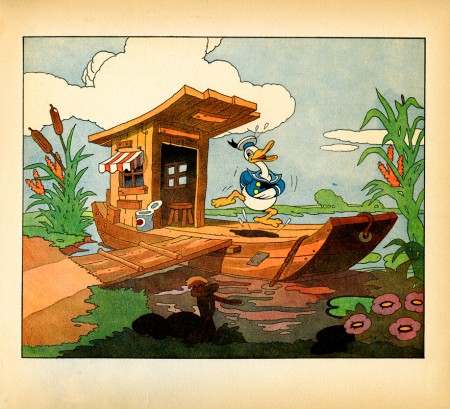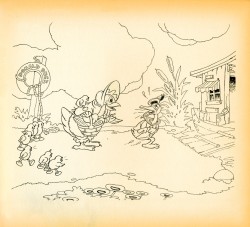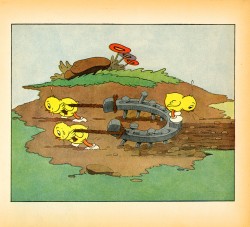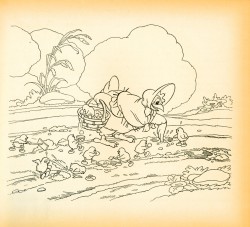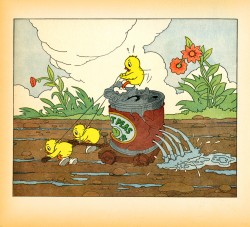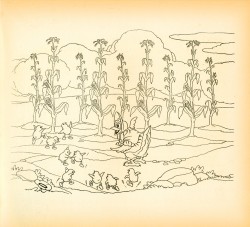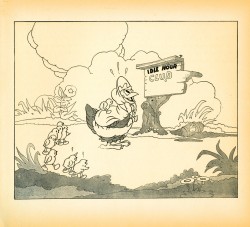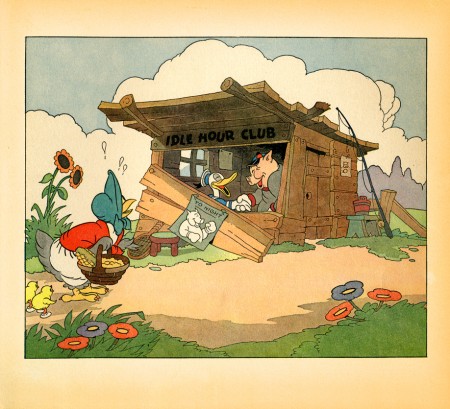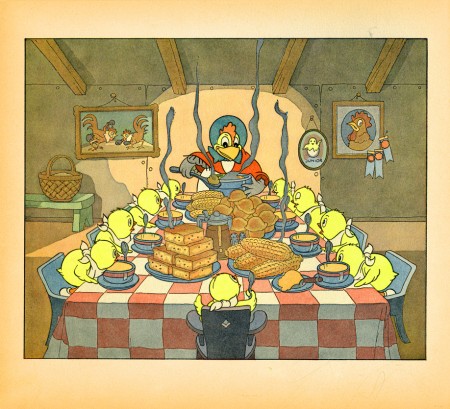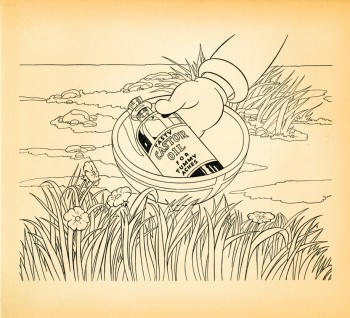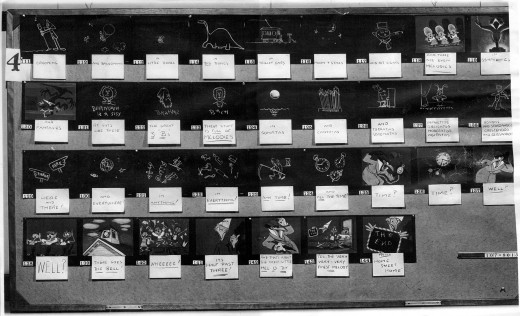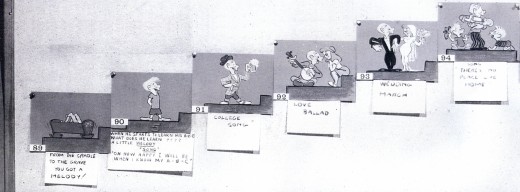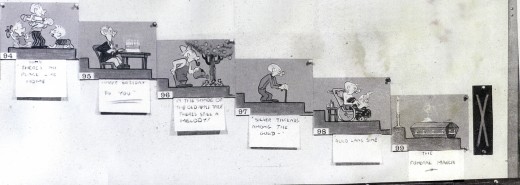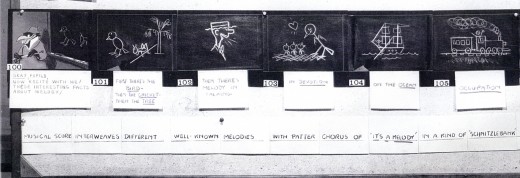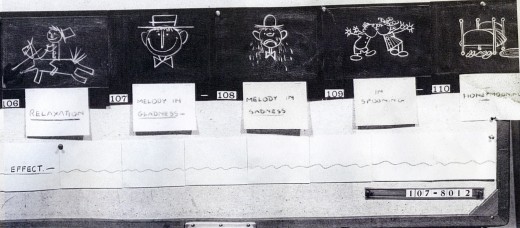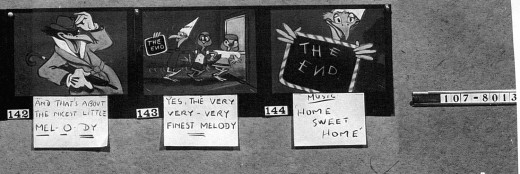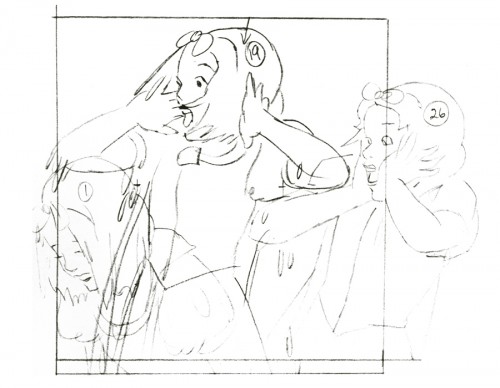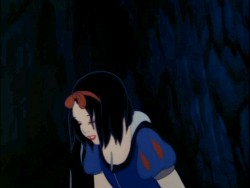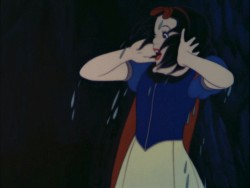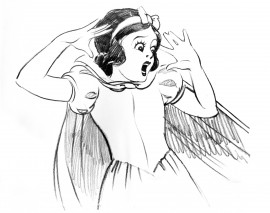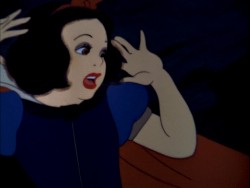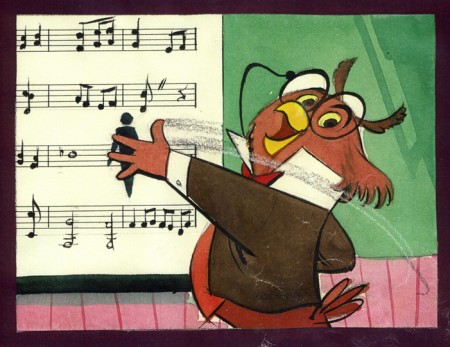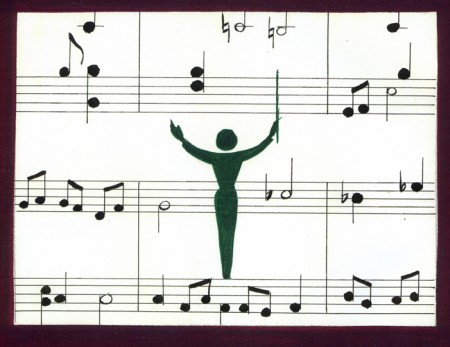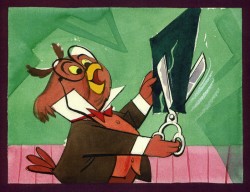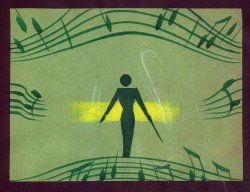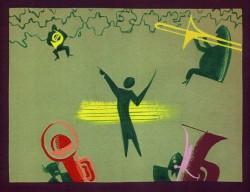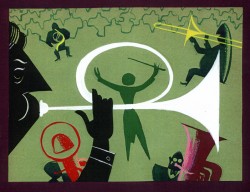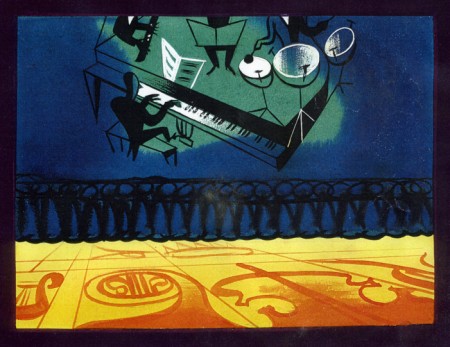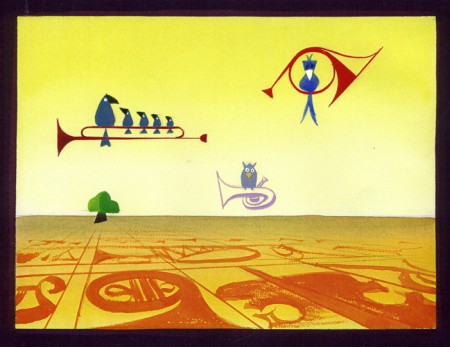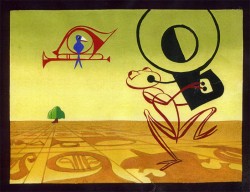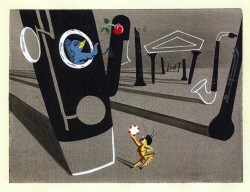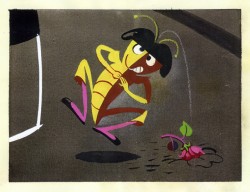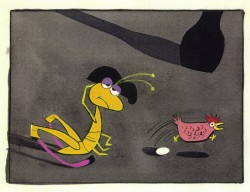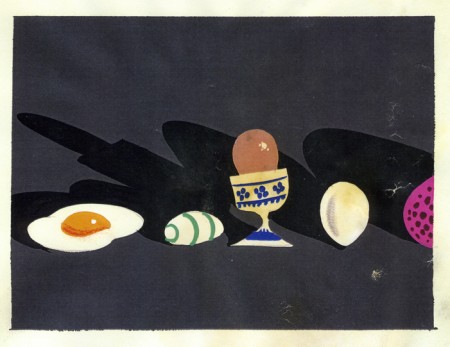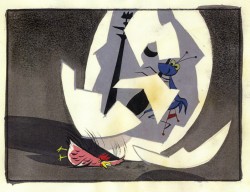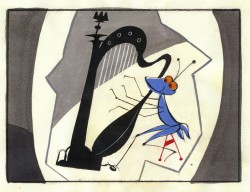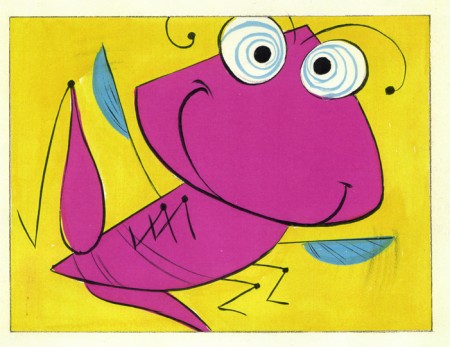Monthly ArchiveOctober 2008
Daily post &Disney 11 Oct 2008 08:32 am
Bashir’s Oscar, Mickey’s voice
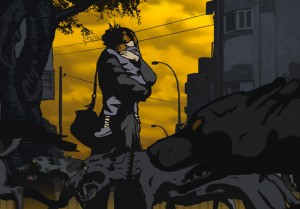 Ari Folman’s Waltz With Bashir has been submitted by Israel as its contender for the foreign-language Oscar.
Ari Folman’s Waltz With Bashir has been submitted by Israel as its contender for the foreign-language Oscar.
The film is also eligible for animated feature, but not for documentary. As reported in Variety, the film has instigated some complaints to the Academy over their documentary rules. Currently, a doc has to perform in NYC for a week prior to Aug. 31st to be eligible. If Sony Pictures Classics had followed this rule to qualify, the film could not have participated in the NY Film Festival.
A host of executives and festival veterans are calling on the Academy of Motion Picture Arts and Sciences to revise the rule. However, if the Academy does agree to change the rule, it wouldn’t help Bashir since the revised rule wouldn’t go into effect until 2009.
The film uses hand-drawn animation to illustrate Folman’s interviews with participants of the 1980s Lebanese war, including the massacre of Palestinian civilians. It was done, primarily, in Flash, and moves pretty stiffly. In fairness, I have to say I wasn’t overwhelmed by the film, so I suspect it’s not a challenge to either Religulous or Wall-E (not that I can say I liked either of those).
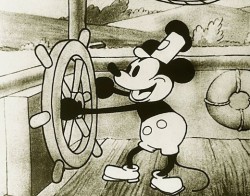 -Tuesday, September 30th marked the 80th anniversary of Mickey Mouse’s big sound recording. It was the second session that took three hours and ended brilliantly.
-Tuesday, September 30th marked the 80th anniversary of Mickey Mouse’s big sound recording. It was the second session that took three hours and ended brilliantly.
The film didn’t debut until November 18th when it opened at the Colony Theater in NYC. This theater was enormous, similar to Radio City Music Hall or the Roxy. There was a stageshow with the feature film as well as numerous shorts. In 1928, the Mickey Mouse cartoon was a hit – audiences demanded the cartoon be shown more than once on the program.
This small landmark passed virtually unnoticed, even on the blogosphere. The only site I know that mentioned it was Joe Campana‘s Animation Who & Where.
Perhaps things will be different for the November anniversary of it’s theatrical debut. I vividly remember the 50th Anniversary when they screened Steamboat Willie again at the Colony (now the Broadway Theater)for some invited guests and a bunch of stragglers, myself included. Of course, two other shorts were released earlier that same year in their silent version: Plane Crazy and Gallopin’ Gauchos.
- Speaking of Mickey Mouse, much has been made of the demotion of Glen Keane from director of Rapunzel to Directing Animator. The Cartoon Brew piece has generated quite a few comments and most of them bemoan the action taken by producers Lasseter and Catmull on the upcoming feature (projected release 2010). Keane has been involved as director for the past seven years.
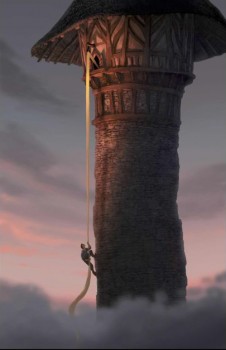 My view is a bit different (and of course I have no information other than my own guesswork to go on) on the situation. Consequently, if anyone has a more informed psition, plese let me hear it.
My view is a bit different (and of course I have no information other than my own guesswork to go on) on the situation. Consequently, if anyone has a more informed psition, plese let me hear it.
I think that Disney has never treated directors of their animation features as any more than glorified production coordinators. They work incredibly hard to keep the people below them happy while at the same time trying to satisfy the wishes and needs of those above them. There are a lot of people above them these days. It becomes a position of controlling traffic and keeping the ship sailing fluidly. It’s not about opinion.
Certainly, directors have their say and their influence, but the Animation Directors have always dominated at Disney. You can’t tell me that Woolie Reitherman won many arguments directing Milt Kahl on any of the films – or Frank Thomas, or Marc Davis. These guys worked together intimately, but Fred Moore or Ward Kimball or Bill Tytla had their say, and Ben Sharpsteen or David Hand kept them happy while making sure Walt was happy.
This was very much unlike the situation at WB where a Chuck Jones or Bob Clampett ruled and was the most heard voice in the production. Animators, there, were certainly subservient to the directors.
Undoubtedly, this had to do with the budget of the WB cartoons over the Disney product. The single voice of the WB films dominated because they had to control every penny – it was too tight. Action, cutting, layout, even writing were subject to the budget, and the directors made sure they came in on that budget.
At Disney’s this became the rule in many of the later shorts, such as Toot Whistle Plunk and Boom where the director like Ward Kimball and the budget dominated, but, for the most part, the animators ruled at Disney.
Glen Keane’s move back to animation – excuse me, Directing Animator – is, in my eyes, a promotion. Lasseter and Catmull had to bring out the real Glen Keane while getting the production moving. (There also seems to be more involved than we’ve heard. Ed Catmull reports that Keane had to “attend to some non-life threatening health issues.†Of course this doesn’t explain why co-director Dean Wellins “removed himself.”)
Animation Artifacts &Disney &Story & Storyboards 10 Oct 2008 08:17 am
Melody Art – 2
- Having completed posting the first storyboard to the Disney short, Melody: Adventures In Music I’d like to complete my posting of the preliminary art and boards for this film. I’d displayed the first half of this artwork last week.
Needless to say, John Canemaker has to be thanked many times over for lending me this rare material from his collection.
When the images have pegs on them (the black ones), I’ve given a complete scan in the enlarged version.
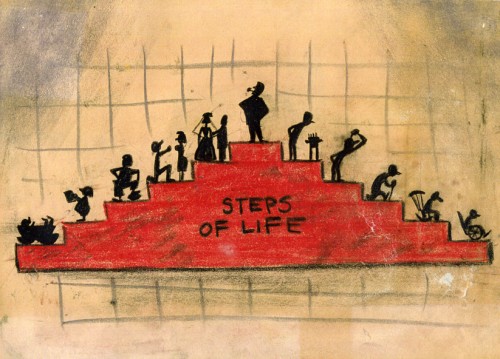
(Click any image to enlarge.)
Let me also repeat the following information. You can find frame grabs from this short on Ward Jenkins‘ site, The Ward-O-Matic.
MELODY is included in the Walt Disney Treasures: Disney Rarities dvd set and it is also found in the bonus features of the Fantasia 2000 dvd.
The film is also on YouTube (at the moment) in not the best condition.
Books &Comic Art &Disney &Illustration 09 Oct 2008 08:23 am
Wise Little Hen – Book
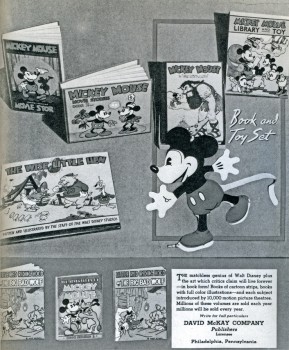 - Another gem from the collection of John Canemaker is this early book published by Whitman in 1935. The Silly Symphony short, The Wise Little Hen, introduced Donald Duck to the world on release of the film in 1934.
- Another gem from the collection of John Canemaker is this early book published by Whitman in 1935. The Silly Symphony short, The Wise Little Hen, introduced Donald Duck to the world on release of the film in 1934.
The book is a good example of some early merchandising by the Disney brothers. These books started out as Premium give-aways: for example Mickey Mouse, Mail Pilot was given away by the American Oil Company and Mickey Mouse Sails for Treasure Island was a premium for Kolynos Dental Cream.
The success of the books continued for many years, even after Whitman grew into the Western Publishing who released the Little Golden Books and many many comic books featuring Disney characters. _____________________________An early ad for the books.
Here are the illustrations for this book:
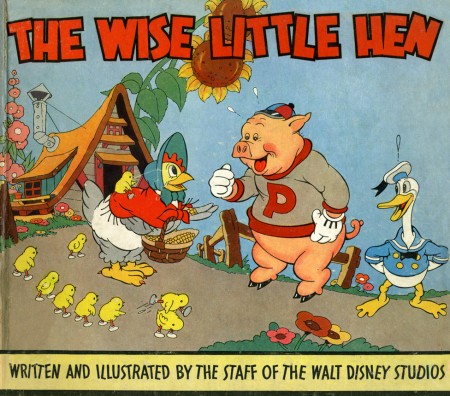
(Click any image to enlarge.)
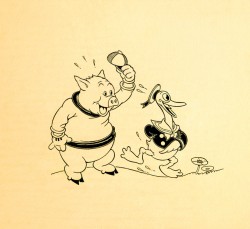
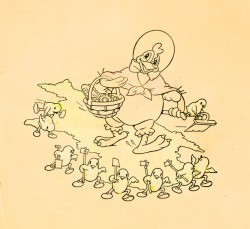
These two images greet you when you open the book.
They’re the inner cover for both the front and back of the book.

I wish Donald had continued to look like this. I love the way he looks in the film.
Animation Artifacts &Comic Art &Daily post 08 Oct 2008 08:23 am
Van Boring
- I received an email yesterday from Tom Sito (who’d heard it from Jeff Massie) that Gerard Salvio died June 23 at the age of 82. Gerard was the last Business Agent for Local 841 of the NY chapter of the Screen Cartoonists Guild. He and I bumped heads quite a few times during the production of Raggedy Ann, but we always did it with civility and good temper. After that feature, the Guild slowly fell in NY, eventually becoming part of another union.
Tom’s note points out that there’s an obituary on page 70 of the latest IATSE Bulletin (which I don’t have). This obit appeared in the NY Daily News: Gerard R. SALVIO, June 20, 1926 – June 23, 2008. Of complications from renal failure. Optical Cameraman for MPO & EUE; Business Agent, Screen Cartoonists Local 841, IATSE & later IATSE Int’l Rep. Gerard is survived by his wife, Ann Salvio, (nee Terpay); his daughters, Katherine Salvio, Lenore Hinrichsen, Janet Littlejohn & his granddaughters Danielle Hinrichsen & Sara Littlejohn.
Jeff Massie also pointed to this book about Gerard written by one of his daughters.
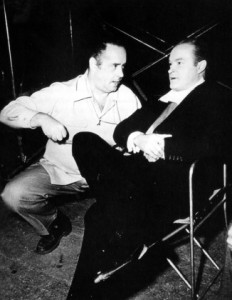 - Allan Holtz’ Stripper’s Guide, a site featuring lots of interesting information and examples of past comic strips, has a post highlighting the Van Boring strip done by “Tish Tash,” otherwise known as Frank Tashlin. Of course, he was the man who directed Scrap Happy Daffy and The Disorderly Orderly as well as plenty of other animated and non-animated films. Tashlin also did a short-lived comic strip. Obscure examples are on display at this site.
- Allan Holtz’ Stripper’s Guide, a site featuring lots of interesting information and examples of past comic strips, has a post highlighting the Van Boring strip done by “Tish Tash,” otherwise known as Frank Tashlin. Of course, he was the man who directed Scrap Happy Daffy and The Disorderly Orderly as well as plenty of other animated and non-animated films. Tashlin also did a short-lived comic strip. Obscure examples are on display at this site.
There’s also a follow-up post on Scott Marks’ Emulsion Compulsion.
There’s an excellent interview with Tashlin (and another example of Van Boring) on Mike Barrier‘s site – naturally enough.
If you’d like to know more about Tashlin (and you should) look at this NYTimes article._______Tashlin & Bob Hope “The Lemon Drop Kidâ€
And speaking of Mike Barrier, if you haven’t read his piece on Phil Klein, check it out. There’s a wealth of material there, and it flows so effortlessly for Mike. (Or, at least, it seems that way.) I have to say I love this site.
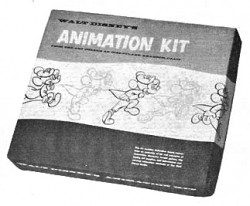 Another site I love is A Film LA, Hans Perk‘s gem. So much material shows up there. Recently he had an ad I remembered from the ’50s. It took me by surprise. It advertised for the Disney Animation Kit available from Disneyland’s Art Corner.
Another site I love is A Film LA, Hans Perk‘s gem. So much material shows up there. Recently he had an ad I remembered from the ’50s. It took me by surprise. It advertised for the Disney Animation Kit available from Disneyland’s Art Corner.
I actually bought one of those kits and animated on the light box for many years after making almost two hours of 8mm animation before I even got to college. Lots of memories in that one ad.
The kit included books on how to draw Mickey, Donald, Goofy and Pluto. It also had a book on tips on animating (stretch & squash, follow through, etc.) I lost those books but got copies of them when Disney held a big event at NY’s Lincoln Center in 1973. The set also included a lightbox – a wedge you constructed made of beaver board with three holes to place three circular wooden pegs into it. They gave a couple of flip books and a couple of exposure sheets. That kit probably solidified my desperate desire to get into animation when I was a kid. Is there anything comparable today to inspire children?
Then, to top off that post, Hans has given us the scene drafts to The Alpine Climbers, a brilliant Mickey short. This site is probably the equivalent, at least for me, of the Art Corner at Disneyland.
You can see a closer look at at the Animation Kit on Jenny Lerew’s site, Blackwing Diaries, where she also displays a couple of the books.
Commentary 07 Oct 2008 08:04 am
Nasty Politics
 I found this article on a site, As Yet Still Untitled:
I found this article on a site, As Yet Still Untitled:
“Palin cited an article in Saturday’s New York Times about Obama’s relationship with Ayers, now 63. But that article concluded that “the two men do not appear to have been close. Nor has Mr. Obama ever expressed sympathy for the radical views and actions of Mr. Ayers, whom he has called ‘somebody who engaged in detestable acts 40 years ago, when I was 8.’ “
Several other publications, including the Washington Post, Time magazine, the Chicago Sun-Times, The New Yorker and The National Review, have debunked the idea that Obama and Ayers had a close relationship.â€
Too late, damage done. Why does CNN hate the truth?
The complaint was that CNN used McCain’s attack to bolster the first half of the news story. The truth part didn’t come until well into the story. I’ve been bothered by this approach to revealing the story. This was also the approach of the NYTimes article; it took reading almost a third of the article before the sentence, highlighted above, appeared.
I’m looking forward to the debate tonight. Obama’s campaign manager guaranteed that Obama would bring up this subject and throw it back in McCain’s face. It could be a testy show and much more entertaining than Sarah “wink wink, Say it ain’t so, Joe” Palin. I think I’d prefer a debate on issues, as Obama has been doing to date.
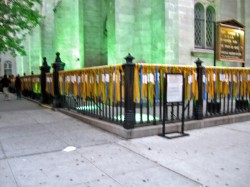 I keep passing this church, Marble Collegiate Church, on 29th Street and Fifth Avenue, and I frequently have been caught offguard by these ribbons moored to the iron fence around the church.
I keep passing this church, Marble Collegiate Church, on 29th Street and Fifth Avenue, and I frequently have been caught offguard by these ribbons moored to the iron fence around the church.
Of course, as anyone who’s heard the Tony Orlando song knows, the yellow ribbons represent those soldiers who were killed in war – Iraq. The sign outside the church details what each of the colored ribbons represents, and each of the ribbons has a dead soldier’s name attached to it.
It’s extremely moving and jarring as you pass the display, and I always stop to read a couple of the names. I guess, in some ways, that’s not unlike the Vietnam memorial in Washington where you read names of dead Viet Nam veterans off the sculpted wall.
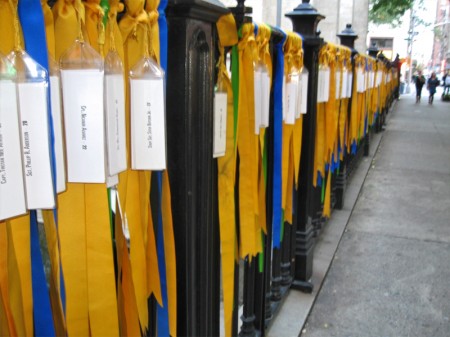
It makes me wonder what changes the incoming President will make. Will he go to any funerals for the returning dead? Will he allow photographing these services or returning caskets? Already a congressman has initiated a bill reversing this policy of George W. Bush. The bill, the Fallen Hero Commemoration Act, is being sponsored by Rep. Walter Jones (R-NC) and co-sponsored by three Democrats and three Republicans. A new President could easily eliminate this nasty measure instigated by the Bush administration.
Animation Artifacts &Disney &Story & Storyboards 06 Oct 2008 08:12 am
Melody Board 1 – pt.2
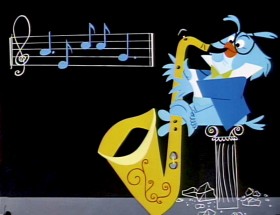 - Last week I posted the first part of the storyboard to the Disney short, Melody: Adventures in Music. This is another gem loaned to me by John Canemaker. It’s the first board to this short and has only some resemblance to the actual film.
- Last week I posted the first part of the storyboard to the Disney short, Melody: Adventures in Music. This is another gem loaned to me by John Canemaker. It’s the first board to this short and has only some resemblance to the actual film.
Next week, I’ll post a second board for the same film, one that looks very different and more like the final cartoon.
I’ve also posted some of the artist sketches for the film and will have more of those later this week.
Here are the last two storyboard panels in full size:
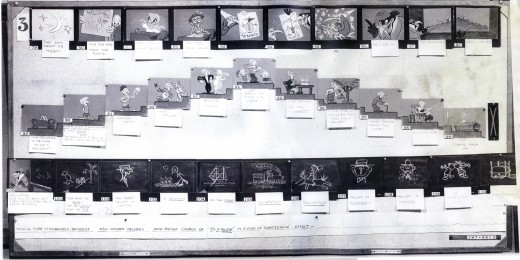
(Click any image to enlarge.)
Here are the rows of this board broken into halves so that I can get you the largest possible images:
You can find frame grabs from this short on Ward Jenkins‘ site, The Ward-O-Matic.
MELODY is included in the Walt Disney Treasures: Disney Rarities dvd set and it is also found in the bonus features of the Fantasia 2000 dvd.
Art Art &Photos 05 Oct 2008 08:21 am
Sunday photo – Treehouse followup
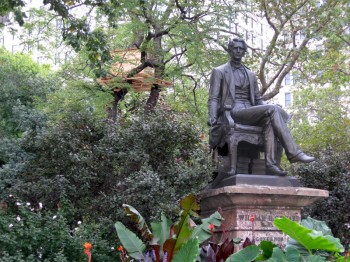 - Last week, I wrote about the start of an art installation in Madison Square Park of some “Treehuts” (though I think of them as “Treehouses.” (See post here.)
- Last week, I wrote about the start of an art installation in Madison Square Park of some “Treehuts” (though I think of them as “Treehouses.” (See post here.)
The artist is Tadashi Kawamata, and you can see a blog about this work here.
At first, when you enter the park from the main entrance, you don’t notice them, but you’re soon caught up looking into all the trees to see if there’s a construction there. The natural wood makes me wonder what’s going to happend to these “huts” after the weather’s been at them for a while.
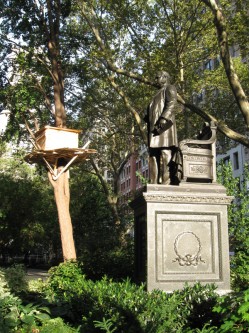
The rear entrance to the park on Madison Ave. & 26th Street leads you to this treehouse just behind the statue of Chester K. Arthur. It was a surprise to see it since this wasn’t here last Monday.
You’ll see a closer shot of this treehouse, from another angle, pictured below.
The path, immediately to the left of Chester K. Arthur, leads right to this treehouse. There seems to be a bit more dignity to the structures on this side of the park since there are relatively few of them.
The main entrance (pictured at the top of this post – with a treehouse barely visible over Hans Christian Andersen’s shoulder on the left of the photo) leads to a large number of them, and it gets to be a bit much.


I tried to get more than one shot of some of these treehouses so that you can see what their environment is like and then get a closer look at how they’ve been built.
When the workers were constructing they had lots of lumber and seemed to have cut it and constructed these things from the ground up (literally, I guess.)



This is looking out on the main entrance (23rd Street & B’way) of the park.
Lots of other people have photographed these “Treehuts.” (I guess they’re popular.) Check out some of these Flickr pieces.
Tadashi Kawamata, the artist, has a number of other installations you can check out on the internet. This one is impressive. As is this one in Versailles.
Animation &Disney &repeated posts 04 Oct 2008 09:12 am
Rotocapture revisited
Rotoscoping got some attention back in January 2007 after a number of Motion Capture films were released. Here’s a post I did back then.
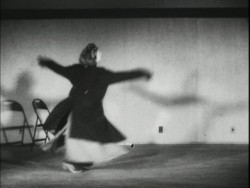 – A lot has been discussed in the past week about the validity of Motion Capture as a form of “Animation.” This conversation was instigated by the Oscar nominations. Two of the three nominations for the Best Animated Feature were created using MoCap.
– A lot has been discussed in the past week about the validity of Motion Capture as a form of “Animation.” This conversation was instigated by the Oscar nominations. Two of the three nominations for the Best Animated Feature were created using MoCap.
Mark Mayerson questioned if we shouldn’t be deciding whether we’re officially going to call Motion Capture animation. And if we shouldn’t, then is Cars the only officially nominated animated feature?
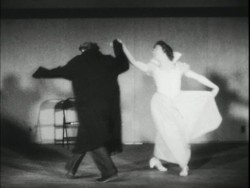 Now, of course, Motion Capture animators feel slighted. But they would have to agree that the soul, the impetus behind the movement does not come from them, but rather from the live action actor that was originally “captured”?
Now, of course, Motion Capture animators feel slighted. But they would have to agree that the soul, the impetus behind the movement does not come from them, but rather from the live action actor that was originally “captured”?
The comparison has been made that
traditional animation has often used Roto- scoping in creating animation. In fact, Disney’s Cinderella became the first feature that was wholly filmed in live action prior to 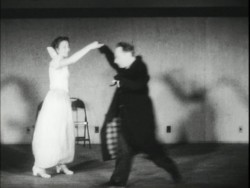
animation.
However, I’d like to make the point that the two methods are unrelated except in that live actors are involved. The difference to me, is that one is inspiration and the other is the heart of the animation.
When an animator is given live action reference material – the rotoscoped/traced drawings from the live action acting – he/she refers to it but animates to what is necessary for the scene. the animator is the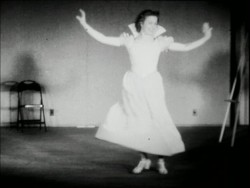 actor using the prerecorded voice, the physical rotoscoped reference, and anything available to help give the character a “soul.”
actor using the prerecorded voice, the physical rotoscoped reference, and anything available to help give the character a “soul.”
Even in Bakshi’s use of Rotoscoping in Lord of the Rings, the animators were allowed to push the drawings beyond the live action, alter the drawings to get them on character, and essentially produce the action.
When an “animator” gets the MoCap filmed live action, the actions are set. The actors have done the movement. What remains is 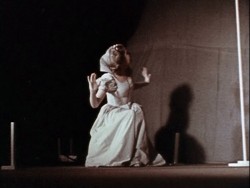 the proper positioning of the characters within the created scene, cleaning up the characters and constructing the scene. There’s no real animation, as we’ve come to know it.
the proper positioning of the characters within the created scene, cleaning up the characters and constructing the scene. There’s no real animation, as we’ve come to know it.
For years now, I’ve called this electronic puppetry, but that’s not really accurate. The site Digital Puppetry seems to have labelled it correctly.
Younger animators seem to have less a problem with all of this labelling and irritation accrued by older veterans. In fact, the 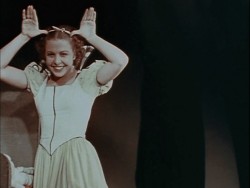 problem really is a threat to the “animator.” Last week, I hyperbolically suggested that the days of the animator were a dead as the dodo. You see, animation has turned into a computer effect. Live Action directors are now directing “animated films” in greater numbers. Peter Jackson had his “Gollum,” Robert Zemeckis had his “Polar Express” (and produced “Monster House”), Ang Lee had (and in fact acted) The Hulk. The “animators” have become interchangeable and almost irrelevant.
problem really is a threat to the “animator.” Last week, I hyperbolically suggested that the days of the animator were a dead as the dodo. You see, animation has turned into a computer effect. Live Action directors are now directing “animated films” in greater numbers. Peter Jackson had his “Gollum,” Robert Zemeckis had his “Polar Express” (and produced “Monster House”), Ang Lee had (and in fact acted) The Hulk. The “animators” have become interchangeable and almost irrelevant.
You aren’t able to define anyone’s animation style behind any of Tom Hanks’ characters in Polar Express. You can only see Tom Hanks or Savion Glover in Happy Feet.
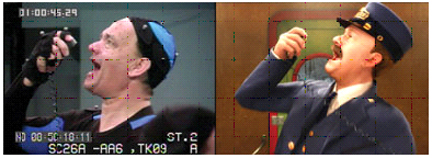
(All images except this one enlarge by clicking them.)
In Snow White, you can tell which scenes Grim Natwick animated; his style of animation comes across. It doesn’t matter how many rotoscoped drawings were given to him as reference. Grim animated the scenes.
In the big picture what really does all this quibbling matter? I enjoyed Happy Feet more than I did Cars. Cars was a better constructed film, both were riddled with cliches. I was entertained by all that dance. I like Savion Glover (though I would have preferred watching Savion Glover.) The film also seemed to have some sort of misguided representation of a message. I appreciated that. Cars, to me, had only a lot of loud noisy reverberation. From the first frame, the film came screaming. The artistry behind the imagery was astounding, as expected from Lasseter, but the film was boring.
Of course, this is only my opinion based on my biases. You have your opinions based on your biases. However, as an Academy voter, I’ll probably vote for Cars because I think technically it was a better “Animated” film. Isn’t that the category?
If you haven’t read Mark Mayerson on this subject, you should.
Ward Jenkins reminded me that he had two interesting posts about Polar Express on his site. It gives an interesting look at how to correct the “Zombie Eyes” on the characters. #1 and #2. Check them out, if you haven’t seen them.
Daily post &Puppet Animation 03 Oct 2008 08:00 am
Lost head
I received this email from NY animator, Willy Hartland. He’d bought a Puppetoon head and is trying to locate the film it comes from.
- I need help authenticating that it’s in fact a Puppetoon head.
It’s clearly a chef character, from perhaps a TV commercial, because
I have yet to find the character on my various George Pal DVDS.
Hopefully someone will be able to identify the character from some obscure short or TV spot.
Underneath the head, is written, “#5 smile.”

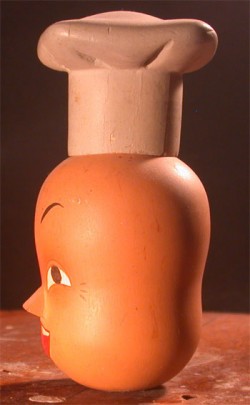
(Click any image to enlarge.)

Chef with hat off.
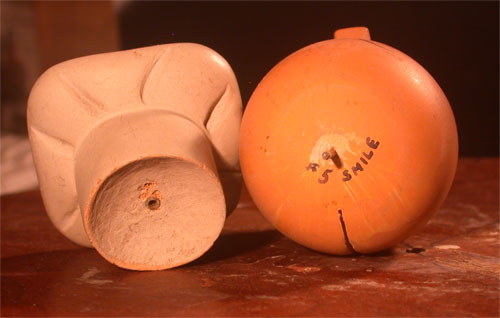
View from below.
When Willy described it to me in Ottawa, I clearly remembered a chef character from one of the shorts, though I couldn’t remember which one. This is definitely the character I remembered, and I still can’t remember the film.
It doesn’t seem to be on the dvd The Puppetoon Movie, though there are a number of shorts not included on that such as: many of the Jasper shorts, or the musical shorts Dipsy Gypsy (a great one), Rhapsody in Wood, or the excellent Dr. Seuss shorts, 500 Hats of Bartholomew Cubbins and And To Think I Saw It on Mulberry Street.
Unfortunately, most of these films are out of our reach and impossible to view.
This face doesn’t look unlike the incidental characters from Tom Thumb, the 1958 live-action/animation film starring Russ Tamblyn. In that movie, there’s an Asian character with an almost identical head.
If anyone has a clue as to which film the head appeared in, please don’t hesitate to leave a comment.
Animation Artifacts &Disney &Layout & Design &Story & Storyboards 02 Oct 2008 07:38 am
Melody Art
- When posting the storyboards from Melody: Adventures In Music, that were loaned me by John Canemaker, last Monday I mentioned that John had also offered some artwork from the film – color keys and story sketches. I’ll post these in two parts: the first here, the second next week after completing the board.
Unfortunately, I don’t know who the artists were that painted these.
Eyvind Earle is credited as Color Stylist; Ken O’Connor and Victor Haboush were credited for Art Direction.
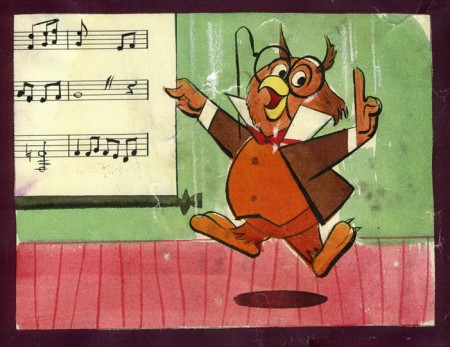
(Click any image to enlarge.)
To be concluded next week.
.
You can find frame grabs from this short on Ward Jenkins‘ site, The Ward-O-Matic.
MELODY is included in the Walt Disney Treasures: Disney Rarities dvd set and it is also found in the bonus features of the Fantasia 2000 dvd.
The film is also on YouTube (at the moment) in not the best condition.
